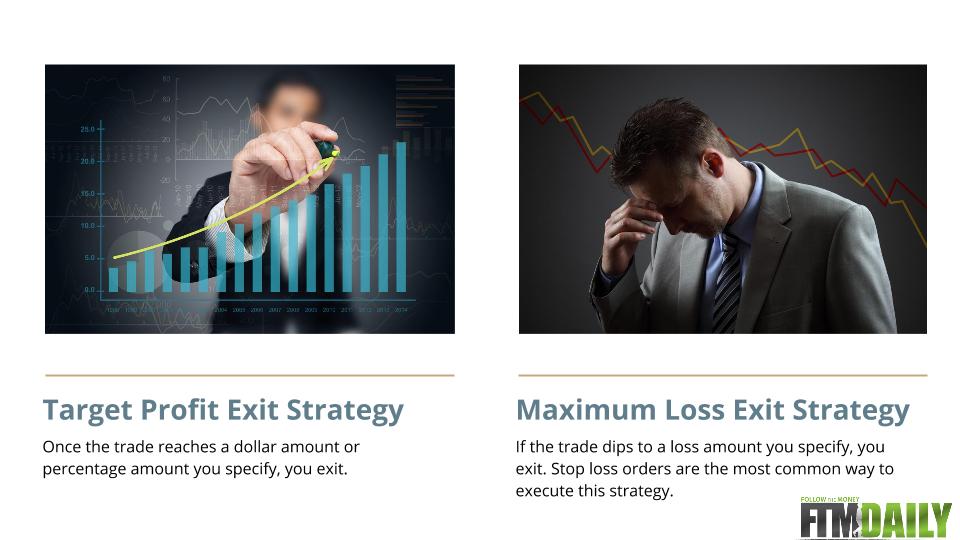You learned in our last Chart of the Day why every trader should have a sound exit strategy. Now, we will discuss some different types of exit strategies and share examples.
The Target Profit exit strategy is used by traders that have a clear profit potential they are looking to reach. For example, based on sound fundamental and technical analysis, you may have a 20% upside outlook on Apple, Inc. stock (Ticker: AAPL). With the Target Profit strategy, you would sell the shares of AAPL as soon as they reach a 20% profit. Most online brokers have the option to automate this strategy by using a contingent or conditional order type.
On the other hand, you may want to limit your downside risk by employing the Max Loss exit strategy. Simply put, if a trade dips to a certain loss amount you specify, you exit the trade. Online brokers have two popular ways to automate this type of exit strategy: Stop Loss Orders and Stop Limit Orders. Let’s briefly define these two terms.
Stop Loss Order: An order placed with a broker to sell a security when it reaches a certain price.
Example: Let’s say that you place a buy order for 100 shares of Microsoft stock (Ticker: MSFT) at a price of $25.00 per share. Now let’s assume that your Max Loss on MSFT is 10%. After the trade is executed, and you actually own the shares in your account, you can then immediately place a stop loss order at 10% below the price that you paid for MSFT, which, in this case, would be for $22.50. This means that if MSFT were to drop in price to $22.50, it would automatically trigger an order to sell the stock in the open market. By using a stop loss order, you can keep your losses under control and within your risk tolerance.

Learn more about Jerry Robinson’s Daily Trade Setups
Stop Limit Order: An order placed with a broker that combines the features of a stop loss order with those of a limit order. A stop-limit order will be executed at a specified price (or better) after a given stop price has been reached. Once the stop price is reached, the stop-limit order becomes a limit order to buy (or sell) at the limit price or better.
Example: Let’s use the same 100 shares of Microsoft stock (Ticker: MSFT) purchased at $25.00. This time, you want to sell them if the stock reaches $22.50, but you don’t want a penny less than $22.50 per share when you sell. In this case, you would place a stop-limit order. This is, in essence, two separate orders. First, you will set your stop price, or the price at which you want the stock to be triggered to sell. In this case, let’s say this is $22.55. Then you will want to set your limit price, which is the lowest price you are willing to take for the stock. In our case, this would be $22.50.
A quick note of caution when using Stop Limit Orders: They may not protect you if a stock gaps down at the open of the market. If our shares of MSFT were to open at $20, your Stop Limit order would not be filled due to the limit price of $22.50. For this reason, I tend to use Stop Loss Order (not stop limits) when implementing my exit strategies.
Until next time,
Jerry Robinson
P.S. This is just one of the many topics I discuss in our Stock Trading University Podcast. It’s free and has 80 episodes available. Listen now.








